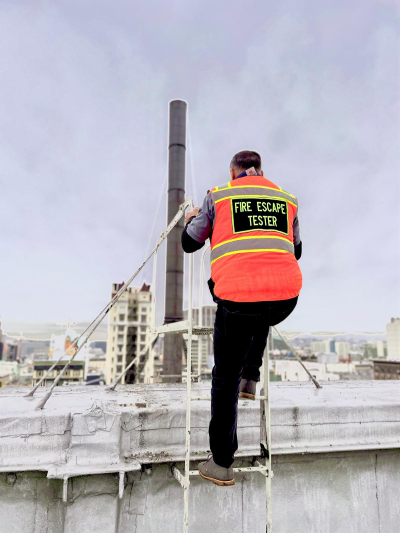Fire escapes are an essential safety feature of buildings, especially in multi-story structures. They provide occupants with a safe and efficient means of exit in the event of an emergency, such as a fire or natural disaster. Fire escapes are required by law in most jurisdictions and are subject to strict safety regulations to ensure their effectiveness and reliability.
The primary purpose of a fire escape is to provide a quick and safe exit from a building in the event of a fire or other emergency. They are typically located on the exterior of a building and consist of a series of metal stairs and platforms that allow occupants to descend to the ground level or a safe area. Fire escapes are typically constructed of steel or other fire-resistant materials and are designed to withstand high temperatures and extreme weather conditions.
To ensure the effectiveness of fire escapes, they must be regularly inspected and maintained to ensure that they are in good working condition. This includes checking for rust, corrosion, and other signs of wear and tear, as well as making sure that all parts are securely fastened and that the stairs and platforms are free of debris or other obstacles.
In addition to regular maintenance, fire escapes must also be designed and installed in accordance with strict safety regulations. These regulations vary depending on the jurisdiction, but typically include requirements for the width and height of the stairs and platforms, the distance between each landing, and the maximum weight capacity of the structure. There may also be requirements for the placement of fire escapes on the building and the type of materials used in their construction.
One of the most important factors in fire escape safety is ensuring that occupants are properly trained in their use. This includes knowing the location of fire escapes in the building, how to access them, and how to safely descend the stairs and platforms. It is also important to have regular fire drills to ensure that occupants are familiar with the procedures for evacuating the building in the event of an emergency.
While fire escapes are an important safety feature, they should not be relied upon as the sole means of exit from a building. Buildings should also have multiple exits, including stairways and elevators, to provide occupants with alternative escape routes in the event that a fire escape is blocked or otherwise unusable.
In conclusion, fire escapes are an essential safety feature of buildings that provide occupants with a safe and efficient means of exit in the event of an emergency. To ensure their effectiveness and reliability, fire escapes must be regularly inspected and maintained, designed and installed in accordance with strict safety regulations, and occupants must be properly trained in their use. While fire escapes are an important safety feature, they should not be relied upon as the sole means of exit from a building, and buildings should have multiple exits to provide occupants with alternative escape routes.


